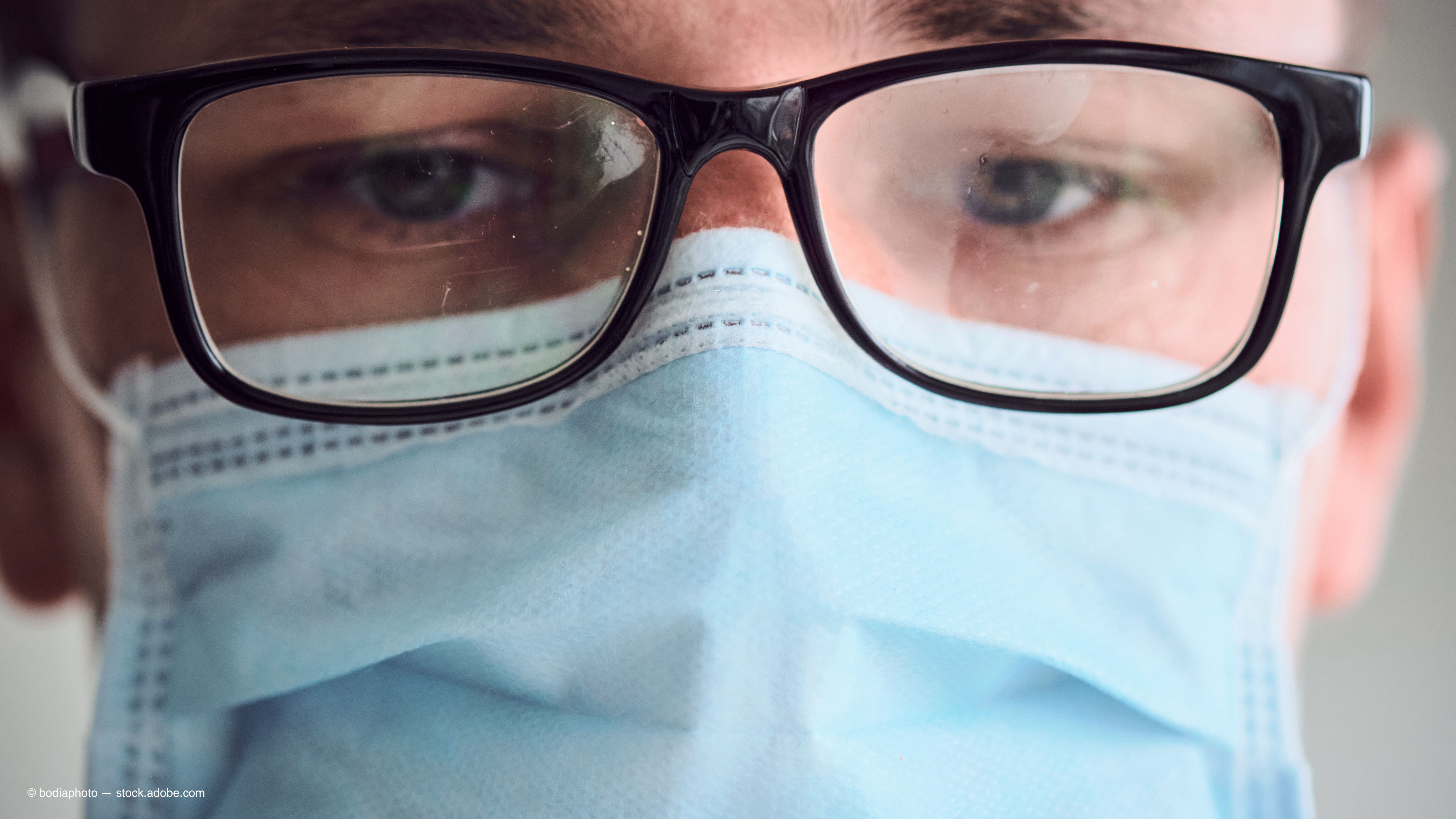
Special to Ophthalmology Times®
Anyone who wears glasses is aware of the dreaded mask fog.
That same exhaled air that fogs up spectacle lenses when wearing a cloth or disposable surgical mask is also passing over the ocular surface in a way that it does not normally do when we walk around without masks.
This altered air flow can irritate the ocular surface and contribute to dryness in much the same way that heating and air conditioning (A/C) air vents do, exacerbating pre-existing ocular surface conditions and causing new symptoms even in those with no history of dry eye.
Clinicians have reported an increase in patients presenting to their clinics with dry eye,1 while survey data also reveals increased subjective complaints of dryness and irritation.2
Related: Making dry eye manageable for patients working from home
Causes
I have personally seen a number of patients with worsening meibomian gland dysfunction (MGD) and meibomitis in recent months.
One theory is that masks that fit high on the face may be a contributing factor, perhaps due to mechanical pressure near the lid margin.
A number of clinicians have also noted significant increases in the incidence of chalazia and hordeola in their practices during the pandemic, with reports in the literature of outbreaks among nurses wearing personal protective equipment.3
Increased perspiration or condensation from face coverings could be a factor in this increased incidence. But so could the redirection by the mask of nasopharyngeal and oral microbes toward the eyes.
Related: The MGD patient journey: diagnosis + initial treatment
Marguerite McDonald, MD, recently observed that the majority of chalazia she saw in 2020 were on the lower lid, a phenomenon she attributed to prolonged mask use “pinning” the lower lids and thereby preventing complete blinks and allowing meibum to stagnate.4
The CEDARS-ASPENS group is currently studying mask-associated meibomian gland issues.
When taking a patient’s history, we should start asking patients how much of each day they spend masked and what type of mask they usually wear.
In the exam, look for superficial punctate keratitis on the inferior cornea and examine the lower lid meibomian glands and secretion quality carefully.
Masks remain an essential public safety measure, so I’m not suggesting that ocular surface considerations outweigh the benefits of masking.
Related: When at first you don’t succeed with MGD patients, keep trying
However, there are a few steps we can take to help our patients:
Mask safety tips for treating patients
- Reassure patients that they aren’t imagining a worsening of symptoms — the struggle is real!
- Recommend for patients to wear a well-fitting mask with a metal nose bridge that can be pinched to adjust the fit or use medical tape to tape the top edge of the mask to their face to reduce upward air flow.
- Encourage patients to control aspects of their environment where possible by taking mask breaks, spending more time outdoors, and staying out of direct air flow from A/C or heat vents.
- Treat MGD with thermal pulsation therapy and provide additional supportive measures, such as oral omega-3 fatty acid supplements, and heated eye masks, as well as in-office or at-home lid margin scrubs for symptomatic relief during this mask-wearing season.
---
References
- Moshirfar M, West Jr WB, Marx DP. Face mask-associated ocular irritation and dryness. Ophthalmol Ther. 2020 Sep;9:397-400.
- Boccardo L. Self-reported symptoms of mask-associated dry eye: a survey study of 3,605 people. Contact Lens Ant Eye. January 20, 2021. [Epub ahead of print].
- Mégarbane B, Tadayoni R. Cluster of chalazia in nurses using eye protection while caring for critically ill patients with COVID-19 in intensive care. Occup Environ Med. 2020;77:584-5.
- McDonald M. A new COVID-related problem: Mask-associated chalazia.Ophthalmology Management. December 2020.
March 18, 2021 at 11:06AM
https://www.ophthalmologytimes.com/view/mask-up-and-dry-out
Mask up ... and dry out? - Ophthalmology Times
https://news.google.com/search?q=dry&hl=en-US&gl=US&ceid=US:en

No comments:
Post a Comment